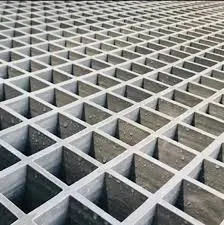
-
 Afrikaans
Afrikaans -
 Albanian
Albanian -
 Amharic
Amharic -
 Arabic
Arabic -
 Armenian
Armenian -
 Azerbaijani
Azerbaijani -
 Basque
Basque -
 Belarusian
Belarusian -
 Bengali
Bengali -
 Bosnian
Bosnian -
 Bulgarian
Bulgarian -
 Catalan
Catalan -
 Cebuano
Cebuano -
 China
China -
 China (Taiwan)
China (Taiwan) -
 Corsican
Corsican -
 Croatian
Croatian -
 Czech
Czech -
 Danish
Danish -
 Dutch
Dutch -
 English
English -
 Esperanto
Esperanto -
 Estonian
Estonian -
 Finnish
Finnish -
 French
French -
 Frisian
Frisian -
 Galician
Galician -
 Georgian
Georgian -
 German
German -
 Greek
Greek -
 Gujarati
Gujarati -
 Haitian Creole
Haitian Creole -
 hausa
hausa -
 hawaiian
hawaiian -
 Hebrew
Hebrew -
 Hindi
Hindi -
 Miao
Miao -
 Hungarian
Hungarian -
 Icelandic
Icelandic -
 igbo
igbo -
 Indonesian
Indonesian -
 irish
irish -
 Italian
Italian -
 Japanese
Japanese -
 Javanese
Javanese -
 Kannada
Kannada -
 kazakh
kazakh -
 Khmer
Khmer -
 Rwandese
Rwandese -
 Korean
Korean -
 Kurdish
Kurdish -
 Kyrgyz
Kyrgyz -
 Lao
Lao -
 Latin
Latin -
 Latvian
Latvian -
 Lithuanian
Lithuanian -
 Luxembourgish
Luxembourgish -
 Macedonian
Macedonian -
 Malgashi
Malgashi -
 Malay
Malay -
 Malayalam
Malayalam -
 Maltese
Maltese -
 Maori
Maori -
 Marathi
Marathi -
 Mongolian
Mongolian -
 Myanmar
Myanmar -
 Nepali
Nepali -
 Norwegian
Norwegian -
 Norwegian
Norwegian -
 Occitan
Occitan -
 Pashto
Pashto -
 Persian
Persian -
 Polish
Polish -
 Portuguese
Portuguese -
 Punjabi
Punjabi -
 Romanian
Romanian -
 Russian
Russian -
 Samoan
Samoan -
 Scottish Gaelic
Scottish Gaelic -
 Serbian
Serbian -
 Sesotho
Sesotho -
 Shona
Shona -
 Sindhi
Sindhi -
 Sinhala
Sinhala -
 Slovak
Slovak -
 Slovenian
Slovenian -
 Somali
Somali -
 Spanish
Spanish -
 Sundanese
Sundanese -
 Swahili
Swahili -
 Swedish
Swedish -
 Tagalog
Tagalog -
 Tajik
Tajik -
 Tamil
Tamil -
 Tatar
Tatar -
 Telugu
Telugu -
 Thai
Thai -
 Turkish
Turkish -
 Turkmen
Turkmen -
 Ukrainian
Ukrainian -
 Urdu
Urdu -
 Uighur
Uighur -
 Uzbek
Uzbek -
 Vietnamese
Vietnamese -
 Welsh
Welsh -
 Bantu
Bantu -
 Yiddish
Yiddish -
 Yoruba
Yoruba -
 Zulu
Zulu
corrosion solution
Understanding Corrosion and Solutions to Mitigate Its Effects
Corrosion is a natural process that results in the degradation of materials, usually metals, due to their interaction with environmental elements such as moisture, oxygen, and various chemicals. This phenomenon can lead to significant structural damage, financial losses, and safety hazards, making it a critical area of concern in various industries, including construction, transportation, and manufacturing. Understanding corrosion and exploring effective solutions is essential to combat its adverse effects and ensure the durability and longevity of structures and components.
Understanding Corrosion and Solutions to Mitigate Its Effects
One of the most effective ways to mitigate corrosion is through the use of protective coatings. These coatings act as a barrier between the metal surface and the corrosive environment, significantly slowing down the deterioration process. Common protective coatings include paints, varnishes, and metallic coatings like galvanizing, where a layer of zinc is applied to iron or steel to prevent rust. Selecting the appropriate coating depends on factors such as the environment, the type of metal, and the expected lifespan of the protection.
corrosion solution

Another solution involves the use of corrosion inhibitors, which are chemical compounds added to the environment to reduce the corrosion rate of metals. These inhibitors can be applied in various forms, such as liquids, gases, or solids and function by forming a protective layer on the metal surface or by interfering with the electrochemical reactions that cause corrosion. For example, in water systems, the addition of specific inhibitors can effectively combat corrosion in pipes and other infrastructure.
Cathodic protection is another widely used method to prevent corrosion, particularly for structures buried in the ground or submerged in water, such as pipelines and ship hulls. This technique involves making the metal target act as the cathode in an electrochemical cell. By providing a sacrificial anode—usually a less noble metal that corrodes preferentially—this method inhibits the corrosion of the protected metal. Cathodic protection systems have proven to be highly effective in extending the lifespan of critical infrastructure.
Regular maintenance and inspection are crucial in managing and preventing corrosion. Implementing routine checks allows for the early detection of corrosion, enabling timely repairs or modifications before significant damage occurs. This proactive approach not only saves money by preventing costly repairs but also enhances safety, particularly in high-risk environments like oil rigs and chemical plants.
In conclusion, corrosion poses a considerable challenge across various industries due to its potential to cause significant damage and safety risks. However, through the implementation of protective coatings, the use of corrosion inhibitors, cathodic protection, and diligent maintenance practices, we can effectively combat this natural process. As technology continues to advance, the development of new materials and innovative protection solutions offers hope for a future where the impact of corrosion can be substantially minimized, ensuring the safety and longevity of critical structures and equipment. By investing in corrosion management strategies, industries can safeguard their assets and promote sustainable practices, leading to enhanced operational efficiency and reduced environmental impact.
Latest news
-
Exploring the Benefits of Top Hammer Drifter Rods for Enhanced Drilling PerformanceNewsJun.10,2025
-
High-Precision Fiberglass Winding Machine for GRP/FRP Pipe Production – Reliable & Efficient SolutionsNewsJun.10,2025
-
FRP Pipes & Fittings for Shipbuilding - Corrosion-Resistant & LightweightNewsJun.09,2025
-
Premium FRP Flooring Solutions Durable & Slip-ResistantNewsJun.09,2025
-
Premium Fiberglass Rectangular Tanks Durable & Lightweight SolutionNewsJun.09,2025
-
Tapered Drill String Design Guide Durable Performance & UsesNewsJun.09,2025









